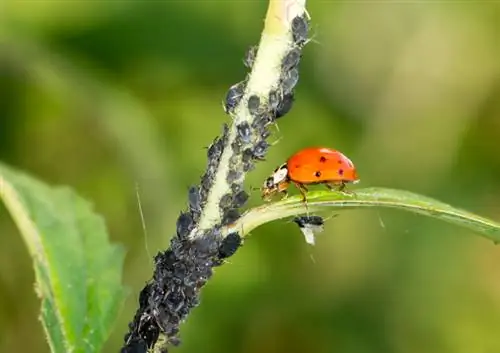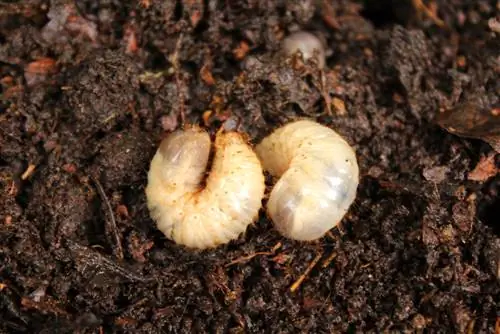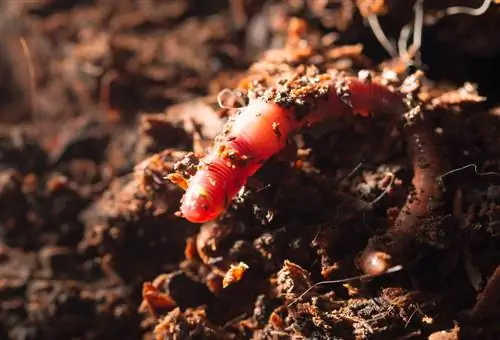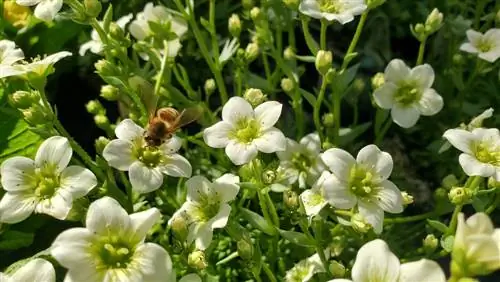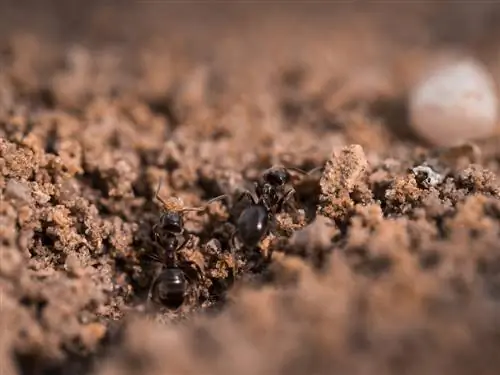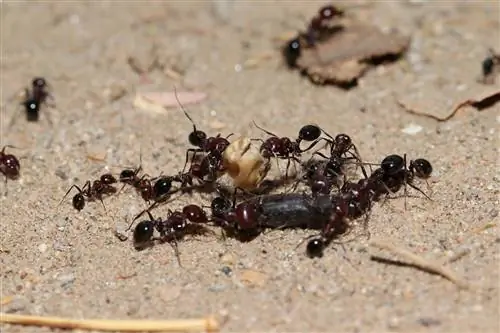- Author admin [email protected].
- Public 2023-12-16 16:46.
- Last modified 2025-01-23 11:20.
Today, pest control is (still) largely carried out using chemical pesticides, which pose he alth risks for humans and animals. But what do environmentally conscious natural gardeners who like genuine organic vegetables and fruit do to keep pests at bay and protect themselves from crop losses? It's simple: you use beneficial insects! To be honest, we were not familiar with this solution on this scale before our research, because: How does the ecologically minded allotment gardener actually come across such beneficial insects?
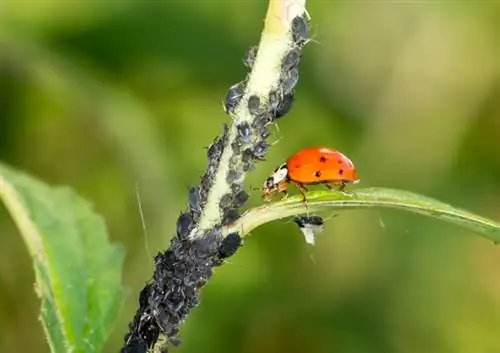
But then it became clear that a lot has changed in the field of pest control in recent years and according to the well-known basic biological principle that nature itself regulates many things in life and also in the garden.
Beneficial insects are now also available for purchase
In garden shops and in many online shops too. Whether it's against the hated codling moth, black weevil, spider mites or meadow flies, a beneficial insect can now grow at home against all imaginable pests if the right brood is at hand. And they come in bags for animal-to-animal fights in the room, on balconies, in the greenhouse and of course for outdoors.
For example: lacewing larvae against aphids, thrips, spider mites and mealybugs. From 12°C they can be used all year round in a combat area of 10 or 30 m2. Price: from 9.99 euros and the GrünTeam describes in detail what else needs to be taken into account in its garden shop.
When it comes to biological pest control, it is important that you study the topic thoroughly beforehand and know the enemies and friends of the various garden crops very well. For this purpose, we have prepared a small overview that may be useful in eliminating the most common types of pests and, particularly importantly, helps prevent their spread.
| Aphids | mealybugs | Scale insects | |
|---|---|---|---|
| Features | Suck out plant sap and poison plants with their saliva. Leaves curl, curl and stick. | Hundreds of eggs are laid on the excreted waxy substance, which are particularly harmful to citrus fruits and daisy plants. | Settle beneath the leaves and cripple them. There is honeydew excreted by animals on the leaf surface. |
| Beneficial insect | Gall midges / lacewings: eat approx. 100 aphids per day | Ladybug: Kills up to 300 lice over the course of its life. | Parasitic wasp: Eats scale insect larvae from the inside. |
| Nudibranchs | Carrot flies | leaf miner | |
| Features | Occupy shoot tips and leaves of vegetables and many other plants. | Cause rusty brown root tips and excrete feces. | Leaf tips turn yellowish to brown and are often eaten. |
| Beneficial insect | Nematodes: Penetrate the snail and decompose it with the body's own bacteria. | Ground beetles & spiders: Eating habits vary, but have a very good preventive effect. | Spiders / Wrens: Both species eat leaf miners with great pleasure. |
Tips & Tricks
Most pests have made themselves at home on the undersides of the leaves and initially cause spots, then blisters and finally cause the leaves to wilt little by little. It's best to familiarize yourself with possible enemies of your plants before planting in spring.

